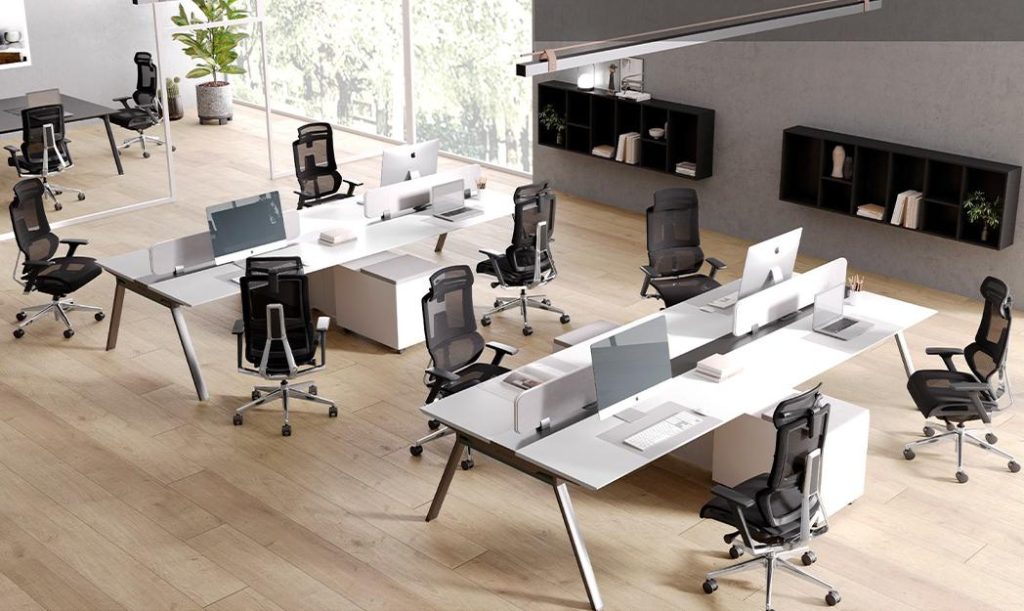In today’s office environments, many employees spend eight or more hours seated at workstations, often in static positions that place undue strain on the spine, hips, neck, and shoulders. Choosing the right office chair is no longer just about comfort—it’s a strategic decision for workplace health and productivity. The ergonomic chair advantages are clear, offering multiple benefits that support long-term wellbeing and operational efficiency.
Ergonomic Chair Advantages at a Glance
Below is a quick overview of the key ergonomic chair advantages that can transform your workplace health and productivity:
| Advantage | Description |
|---|---|
| Supports Natural Posture | Reduces strain on the spine by supporting the body’s natural curve, preventing discomfort. |
| Enhances Circulation | Adjustable features such as seat depth and tilt promote better blood flow and reduce fatigue. |
| Reduces Neck and Back Pain | High backrests and headrests alleviate tension in the upper back and neck, providing greater comfort. |
| Boosts Productivity | Comfortable employees are more focused, engaged, and less prone to absenteeism or fatigue. |
| Encourages Movement | Dynamic adjustments like swivel and tilt reduce stiffness and promote active sitting. |
Supports Natural Posture and Reduces Musculoskeletal Strain
One of the core advantages of an ergonomic chair is its design to follow the body’s natural S‑curve, offering lumbar support, and adjustable features that align seat height, back angle and armrests with the user’s build. According to a workplace study, chairs meeting ergonomic requirements can significantly reduce musculoskeletal symptoms.
From a B2B point of view, this means fewer discomfort‑related slowdowns, fewer sick days and less risk of long‑term injury claims—translating into quantifiable cost savings.
Enhances Circulation and Reduces Fatigue
Traditional chairs can restrict leg movement, increase pressure on hips and the back of the thighs, and lead to discomfort or fatigue over time. In contrast, well‑designed ergonomic chairs include features such as seat depth adjustment, tilt mechanisms and swivel capabilities that promote dynamic micro‑movement and better blood flow.
For companies, this translates into employees who remain more alert and engaged throughout the day—an advantage when tasks require sustained concentration or extended seating periods.
Reduces Neck, Shoulder and Upper‑Back Load
Many office tasks involve screen time, phone calls and collaboration—activities that generate strain in the neck, shoulders and upper back. Ergonomic chairs that include headrests or high‑back designs help relieve this upper load, encourage proper alignment and reduce headaches, tension and distraction.
When employees are comfortable in the upper body, they spend fewer interruptions changing posture or standing up to relieve discomfort—this creates a smoother workflow and better user experience.

Boosts Productivity and Demonstrates Employer’s Commitment to Wellbeing
Beyond physical support, ergonomic seating sends a clear signal to employees: your health matters. Studies show that workplaces which invest in ergonomics report higher morale, fewer absentee days and improved performance.
From a procurement or facility-management standpoint, choosing ergonomic chairs becomes not just a capital outlay but an investment in human capital—and the ROI includes less downtime, fewer injuries, and better retention of talent. The ergonomic chair advantages extend beyond immediate comfort, promoting long-term employee health and productivity, which ultimately leads to a healthier, more efficient workplace.
How to Select the Right Ergonomic Chair for Your Workplace
When evaluating ergonomic office chairs for your business, focus on these must‑have attributes:
- Adjustable lumbar support – ensures lower back curvature is maintained.
- Seat depth and height adjustability – fit different body sizes and ensure feet flat on floor.
- High‑back or headrest option – for upper‑body support.
- Dynamic tilt / swivel / movement capability – promotes micro‑motion and reduces stagnation.
- Breathable materials and robust build – important for long‑term use and durability.
By aligning your procurement criteria with these ergonomic principles, you ensure that your investment directly supports health, productivity and employee satisfaction.
Conclusion & Next Steps
In summary, the ergonomic chair advantages are clear: they support posture, reduce strain and fatigue, protect neck and back health, and enhance productivity—all while reinforcing a culture of wellbeing in your workplace. For businesses serious about creating a healthier, more efficient work environment, upgrading to ergonomic seating is a smart and strategic move.



